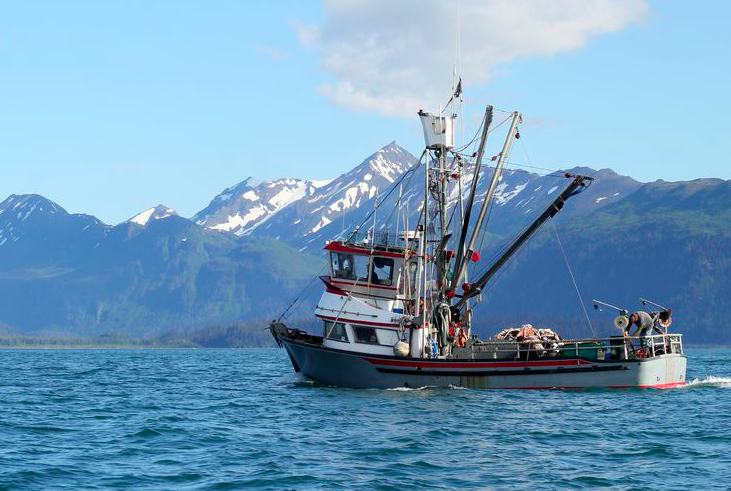BY ART CHANCE
SENIOR CONTRIBUTOR
Must Read Alaska recently reported about somebody’s boy toy being hired to enlighten Alaska state employees as their Innovation Stakeholder Change Manager with the State of Alaska, for $95,000 plus benefits, which is about $140,000 total cost to the people of Alaska. The young man from Marquette, Michigan showed up in May as a “temporary exempt” employee, a position signed off on by the governor’s Chief of Staff Scott Kendall.
So let’s talk about temporary exempt appointments to State service.
A temporary exempt appointment such as the “Innovation Stakeholder Change Manager” is authorized by AS 39. 25. 110(9), a subsection of the State Personnel Act that defines the Exempt Service in Section 110.
[Read: State’s ‘change agent’ has best temp job ever: ‘Drive awareness.’]
It goes back before my time and may go all the way back to the enactment of the State Personnel Act right after Statehood. The State has three services of employees:
Classified: The classified, merit system employees who must be hired to a job classification, paid on the State’s statutory pay system or pursuant to a union contract, and who must be competitively recruited and appointed.
If you’re far enough up the food chain you can cheat it and beat it and give your bed warmer a job, but it is hard, and if you get caught, there might be consequences; it is a crime.
Partially Exempt: The partially exempt service is mostly the true political appointees. They theoretically have to meet minimum qualifications and have a class specification and duties set out in a position description.
That is honored mostly in the breach. The reality is that the real qualification for a partially exempt employee is, “knows the commissioner.”
These are division directors, special assistants to commissioners, assistant attorneys general and the like. They don’t quite serve “at the pleasure” because our Supreme Court sometimes steps in and stops Republican governors from firing Democrat appointees, but they’re about as close as you get in State employment to “at will” employees.
Exempt: The exempt service means State appointments that don’t have to comply with the State Personnel Act at all. The nominal reason is that these are jobs that aren’t susceptible to normal competitive recruiting and can’t be recruited with pay from the State’s statutory pay plan or a union contract.
There is a list of them in AS 39.25.110 and most of them are reasonable; you can’t hire the head psychiatrist at the Alaska Psychiatric Institute at a State range, so you have to be free to negotiate a salary.
But wait! There’s one more: Then there are 110(9) Exempts. A 110(9) Exempt, which is the appointment our “Innovation Stakeholder” boy toy has, is supposed to be someone who is appointed by the governor for some “temporary and special inquiry,” blue ribbon committee members and the like. That is what it is meant for.
Because they’re temporary, 110(9) Exempts don’t get PERS or regular State leave, health insurance or other State benefits.
In the old days, there were temporary exempt appointments now and again if the governor wanted something special looked into, but it wasn’t a common occurrence.
Then came the Gov. Tony Knowles Administration, and Knowles’ director of Personnel had a revelation that some temporary exempt employees weren’t really temporary. Because they weren’t really temporary, they were entitled to PERS and all the other benefits that obtain to regular State employees.
The director of Personnel articulated this revelation in an e-mail to personnel people and the Administrative Services directors.
I saw a copy once, but by the time I became a director in 2003 nobody would admit to having a copy.
Nevertheless, the floodgates opened and almost everybody who was anybody in the ranks of hiring managers had a friend or bedmate in a “temporary exempt” position with no real job duties and a salary that the Governor’s Office would agree to.
When we were the directors of personnel and labor relations in Murkowski, Dianne Corso and I tried to make a bit of a stink about it but it quickly became apparent that so many had their hooves in this trough that nobody was going to do anything to stop it.
It is a good game: Do what you want, get paid what you want. The only thing remarkable about this latest one is that he settled for $95,000; you really aren’t anybody in this club if you’re making less than $100,000.
I tried to poke the snakes about it when I represented the correctional officers in their attempt to bargain retirement benefits, because paying temporary exempt employees a retirement benefit is patently illegal and runs up the State’s liability.
The State’s response was to stop documenting the statutory authority for an exempt appointment so they could answer a PRA request by saying they didn’t have the information requested. How convenient.
It is a blatantly illegal scam and when combined with the equally illegal “exception pay” that so many employees, especially exempts and appointees, get, it is simply daylight robbery from the State Treasury.
So, if you served a term or two on a school board or municipal assembly with a $50 or $100 dollar a meeting stipend back in the 1970s, that was reported as Tier I Public Employee Retirement System income.
All you have to do is find a friend with hiring authority to give you a temporary exempt appointment at $100,000 or more, and instead of your PERS retirement being based on your municipal assembly stipend, your new “high three” is based on your $100,000+ “temporary exempt” salary. Even if you never made any meaningful contribution to PERS.
What a country!
Art Chance is a retired Director of Labor Relations for the State of Alaska, formerly of Juneau and now living in Anchorage. He is the author of the book, “Red on Blue, Establishing a Republican Governance,” available at Amazon. Chance coined the phrase “hermaphrodite administration” to describe a governor who is simultaneously a Republican and a Democrat. This was a grave insult to hermaphrodites, but he has not apologized.











